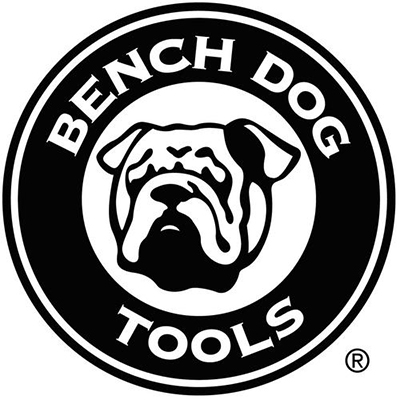
Bench Dog has been in business for about seven years and has always looked for ways to do things in an innovative way. Norston Fontaine accidentally started the company by creating its first router table. He was a woodworker searching for a way to recycle some of the scrap he generated. He thought an economical router table was a good way to reuse the scrap and went about designing one. The table caught on with customers and, as demand grew, so did the company.
The company now offers more than a dozen products including a new table saw mounted router table and a double router table. And, according to Karen Fontaine, Bench Dog’s CEO, the company plans on doubling the number of products it offers in the next 12-16 months.
So is she worried that all of the consolidation in the industry will make Bench Dog a target? She’s not overly concerned. Even if the company did become attractive to a bigger company, it wouldn’t be all bad. “What’s so neat about Bench Dog is the integrity of our designs. Because it’s our baby, I would hope that if we ever were swallowed, the integrity of our designs and welfare of our people would be our legacy. We have well-thought-out designs that are meaningful and not just gadgets,” says Karen.
That entreprenuerial approach has been good news for inventors. When most companies go out on the Internet, it’s usually because they want to reach out to their customers and let people know what kinds of goods and services they can offer. But Bench Dog, took a little different slant with its Internet presence: it used it to reach out to other tool makers and inventors.
That innovative approach was Karen’s brainchild, and it paid off almost immediately. She set up a place on the company website where inventors could find resources for getting their inventions into production, learn about ways other inventors have been scammed, and, most importantly, a way to approach Bench Dog with their tool ideas.
The first person to use this part of the tool maker’s website was an inventor from Tasmania with a tool idea. And Bench Dog is now involved in a deal to bring his idea to market here in the U.S. “I know that that product would never have seen the light of day, at least not through us, if it hadn’t been for the Internet,” says Karen. The company’s site, she says, has gotten a reputation among inventors and inventor organizations, as a place to get good information.
That kind of innovative input is vital to a company, she says, and it’s what a lot of companies are currently searching for. Many of the mergers and acquisitions in the tool industry over the last year, she suggests, are the result of larger companies buying small companies with innovative ideas. Karen says, “you find I think more so nowadays those kinds of deals because it is hard to innovate.”
A Partnership That Works
In any successful marriage, there is usually a division of labor. Karen and her husband have successfully extended that to their business. Norston is in charge of creating the new tools and is the company’s chief industrial designer. Karen, a lawyer with a background in business management, is in charge of managing the day-to-day operations of the company. This was familiar territory for her because her parents were also entrepreneurs who worked together on the family business. In this case, the marriage of Karen’s and Norston’s talents is close to ideal.
“I cannot imagine a better arrangement. I’m really happy working with him. Our expertise is so different that we actually don’t see each other very much during the day,” says Karen. “But when we have to cooperate on something or have a meeting to get input from each other, it’s just great. I think I chose a good life partner.”
Karen has had to learn the tool industry very quickly in the last seven years and admits that she still has a lot to learn. But it’s a fun business to work in, she says, because even tool makers still working out of their garages have good market recognition. “When I go to the woodworking shows and I talk to some of the smaller companies, they are truly little. And yet, they’ve got the chutzpah to figure out how to get a prototype made, how to get something manufactured. Not everyone can do that,” says Karen. In her experience, it would take a committee, and maybe some subcommittees, in a larger company, to get the kinds of things done that she has seen single tool makers accomplish.
– Bob Filipczak





